Welcome to the Janison Academy help portal
People
A user is anyone that has an account in the system. Users can belong to organisations, groups, and more. Users are able to access different parts of the CLS depending on their allocated role. For example basic users cannot see or access many of the forms that an administrator can.
The fields and columns you see in this document may differ to your site depending of the options you have set. You can read more about customising your user screens in our document on user settings.
Users can be managed by selecting Manage People > Users.
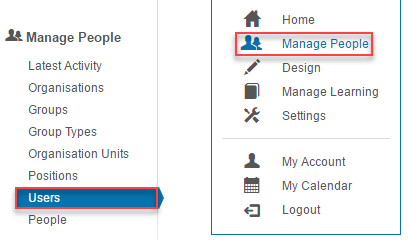
Add a single user
Browse to Manage People > Users.
The fields and columns you see in this document may differ to your site depending of the options you have set. You can read more about customising your user screens in our document on user settings.
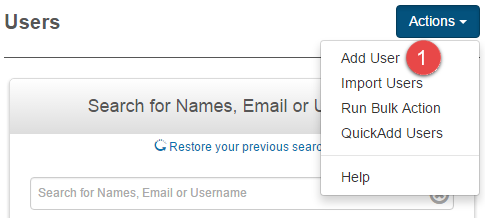
This System section gives you the option to set the Role for your user. Refer to our document on Roles to find out more information on this setting.
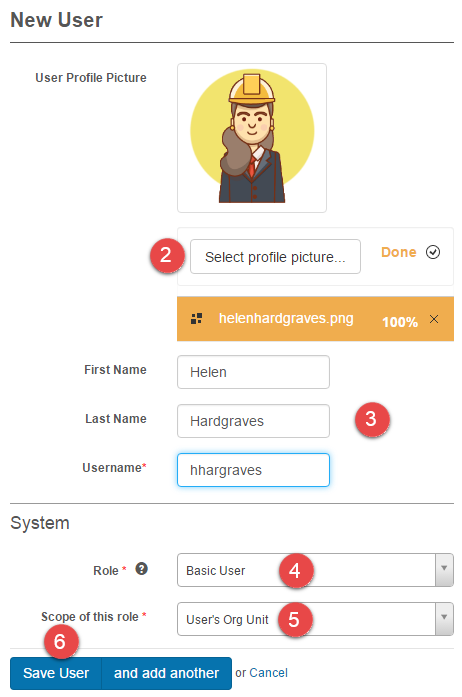
This option allows you to quickly add users but the fields available are limited. This feature is a plugin and will not be available unless the plugin is active. Please contact your account manager for more information.
The quick add user form can be customised using available settings.
Navigate to Settings > Quick add users settings.
Three options are available to determine how usernames are created.

Do not generate username – user must manually specify a unique username.
Generate sequential username – generates sequential usernames based on the prefix concatenated with the next number in the sequence.
If this option is selected, an additional field will be displayed to enter the prefix.

Generate random username – username is generated randomly with optional prefix (which assists with identifying usernames created this way). Consonant characters are used. Usernames are not case sensitive.
If this option is selected, two additional fields are displayed.
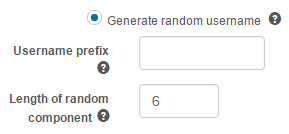
This section relates closely to password settings. You can read more about setting password requirements in our document on password settings.
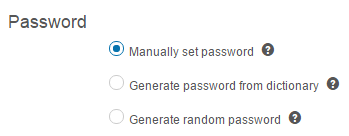
Manually set password requires that the user sets a password that complies with the password complexity requirements.
Generate password from dictionary will generate passwords from the dictionary specified in Password Settings (only available if Password Settings have this option).
Generate random password will generate passwords that meet the complexity requirements specified for manually set passwords.
This section allows you to set the fields to visible on the quick add form. It also allow you to select an email to send to users on creation.

Browse to Manage People > Users.
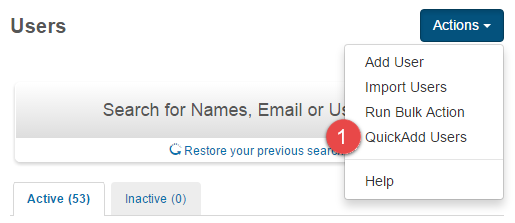
The quick add user screen will be displayed. The fields available will differ depending on the settings you made in quick add users settings as described above.
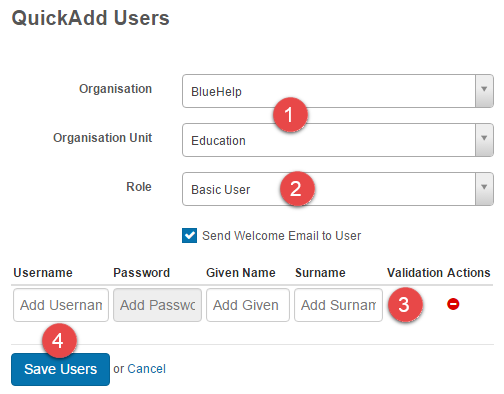
Users can be added to the system in bulk using an import. There are two types of imports:
Browse to Manage People > Users.
Select Import Users from the Actions dropdown.
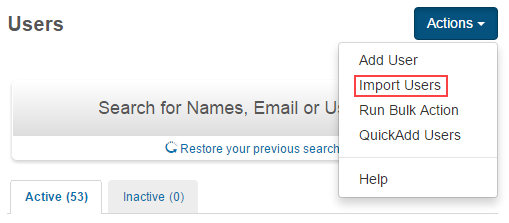
The Add or Synchronise users from Spreadsheet page will be displayed.
Information on the options can be viewed by hovering over the icons.
icons.
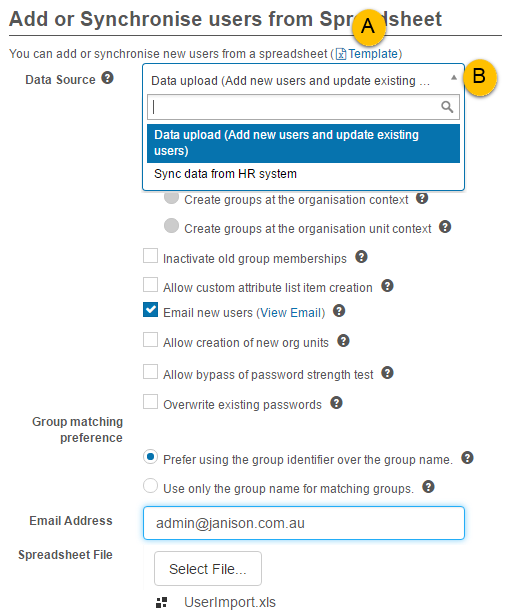
The Supported Attributes tab of the template provides descriptions of the requirements for the data fields and lists the mandatory fields are.
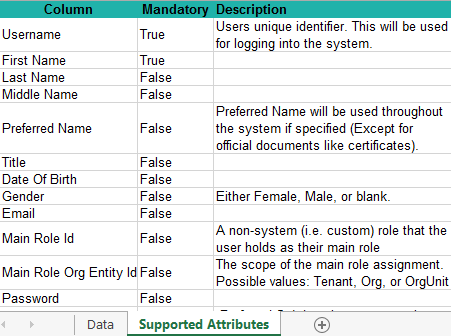
Note: Syncing users from a HR system will deactivate any users in the Janison system if they are not in the HR spreadsheet. The data upload option will not deactivate users in the Janison system if they are not included on the spreadsheet. They will only be deactivated if the Is Active column is set to no.
 icon.
icon.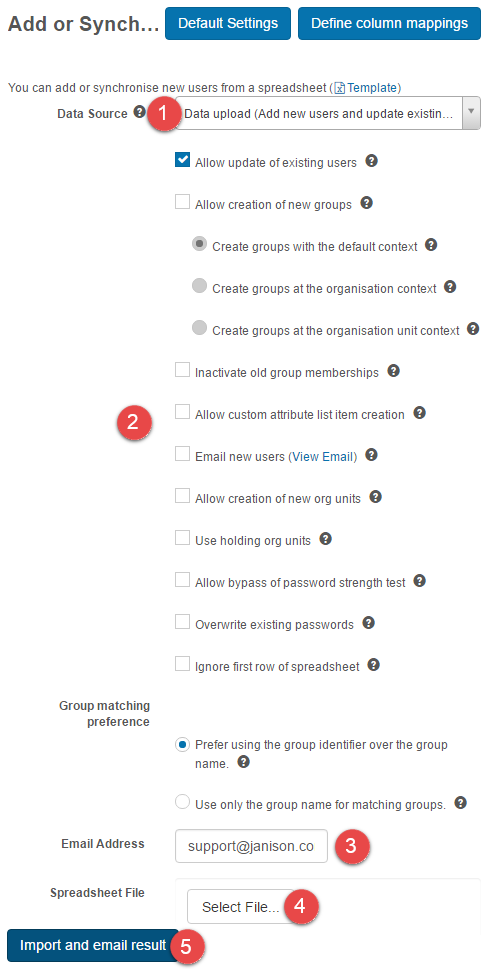
If an error is encountered, feedback will be displayed.
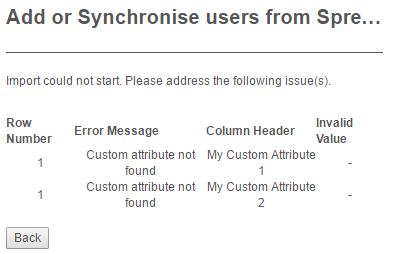
If the import is submitted for processing, feedback will be displayed with a link to the import log.
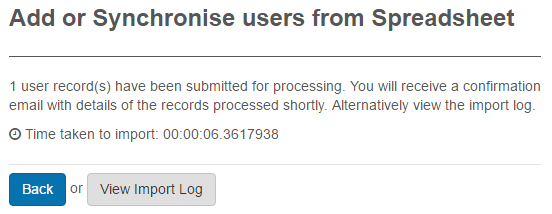
Selecting View Import Log will open a log, the same log sent by email.
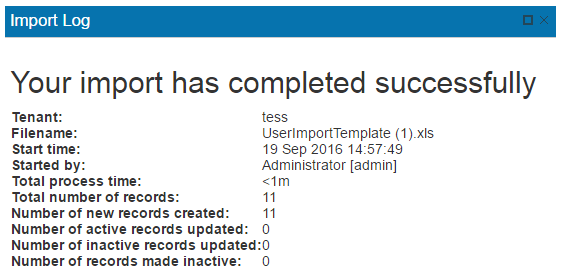
Your preferences for the import settings can be set as default.

A Spreadsheet Import Settings screen will be displayed.
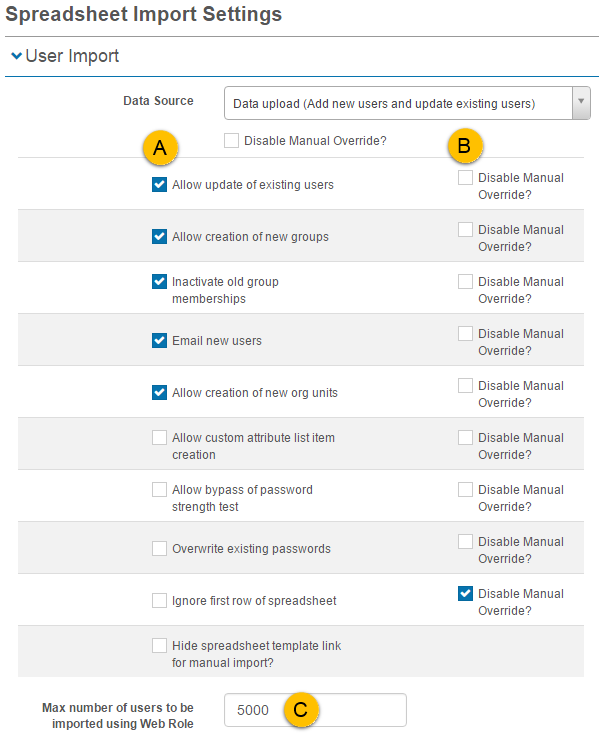

Note: Syncing users from a HR system will automatically deactivate any users in the system if they are not in the HR spreadsheet. The data upload option will not automatically deactivate users in the system if they are not included on the spreadsheet. They will only be deactivated if the Is Active column is set to no.



The Bulk Import Column Mappings screen will be displayed.
On this screen you can match the fields between the two systems. As can be seen in the example below, if the HR uses ‘Surname’ you can match it with the CLS field of ‘Last Name’.

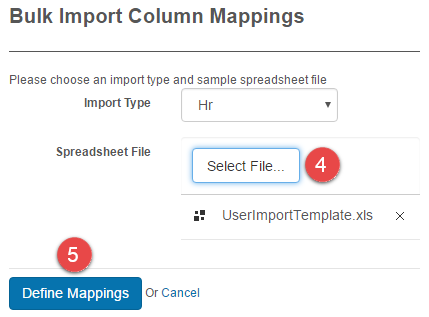
A page to define custom columns will be displayed.
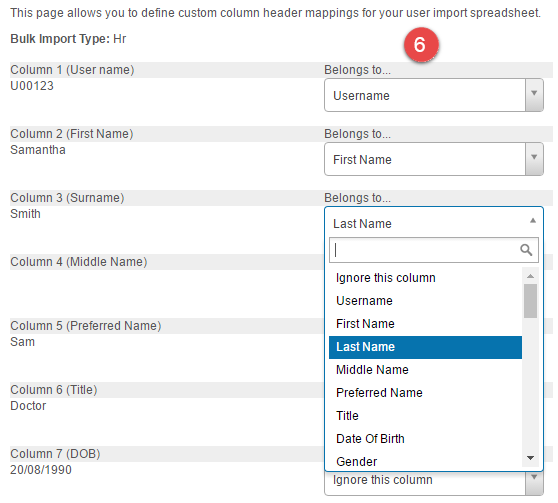

The HR import will then need to be scheduled. See our document on Scheduling for further information.
Archiving a user will set them to inactive and remove their access to the system. Users can be individually archived in the edit screen or in bulk from the user list. They can also be set to inactive via the user import. You can read more about setting users to inactive via an import in our document on import users.
The fields and columns you see in this document may differ to your site depending of the options you have set. You can read more about customising your user screens in our document on user settings.
Archived users can be un-archived.
Select Manage People > Users.
 icon which will take you straight to edit mode.
icon which will take you straight to edit mode.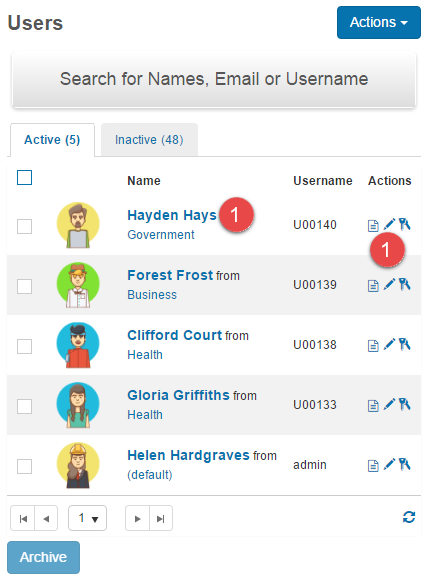
The user details screen will be displayed.
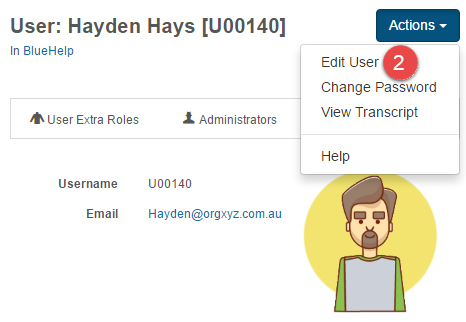
The edit user screen will be displayed.
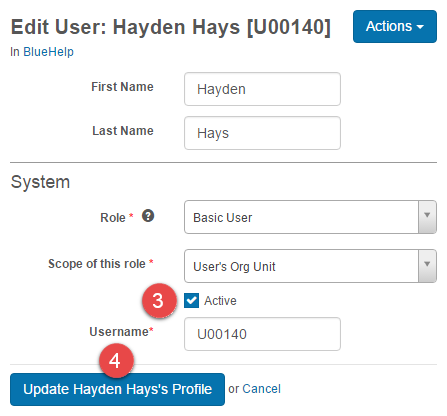
Select Manage People > Users.
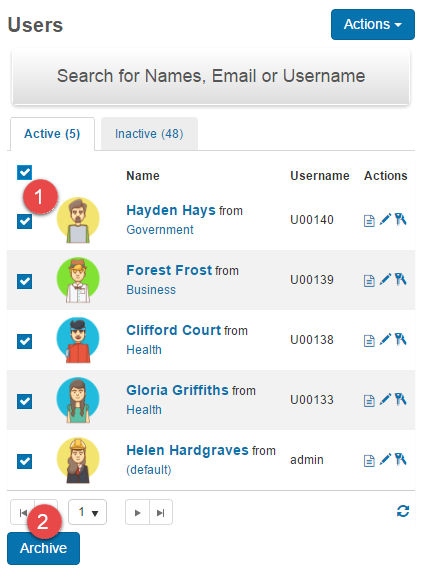
Archived users will be moved to the inactive tab.
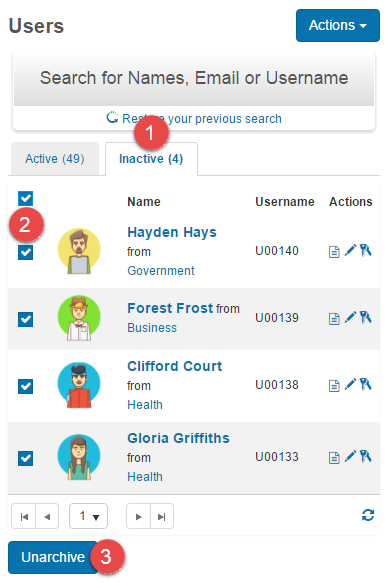
Learners can change their passwords.
Select Manage People > Users.
 icon.
icon.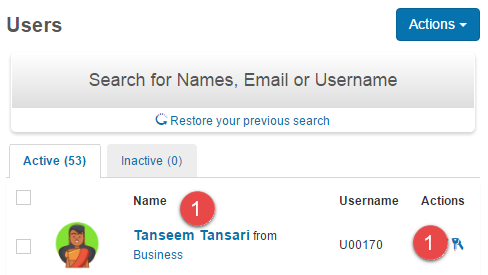
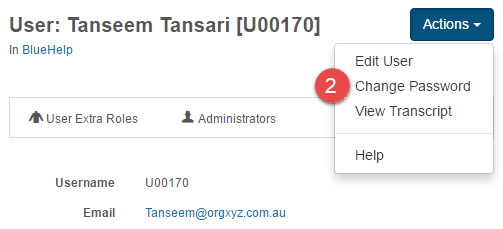
The change password screen will be displayed.
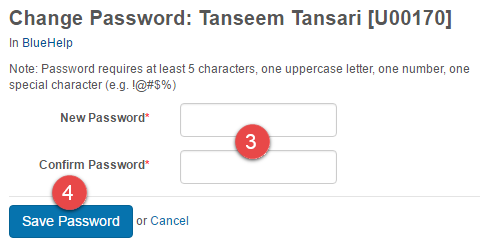
Selecting a user gives you access to their details.
Browse to Manage People > Users.
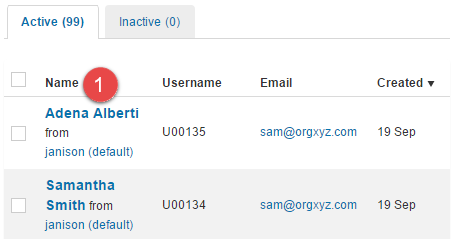
The details of the user are displayed.
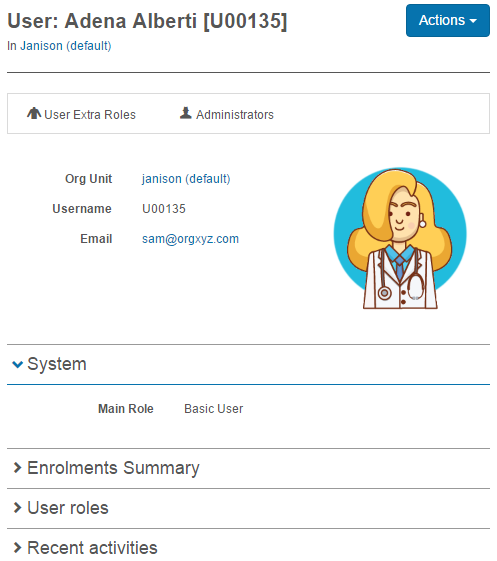
1300 857 687 (Australia)
+61 2 6652 9850 (International)
ACN 091 302 975
ABN 35 081 897 494
© 2024 Janison
Janison acknowledges the traditional owners of the land on which we work and meet. We acknowledge the continuous care of the land, animals and waterways. We pay our respects to Elders past, present and emerging.